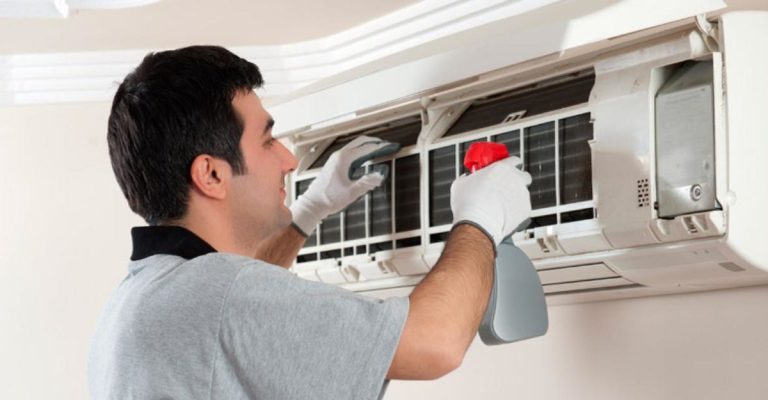When it comes to improving the overall quality of your home, comfort and functionality often go hand in hand. One of the most effective and rewarding ways to enhance both is by focusing on your home’s cooling systems—especially through timely repairs and strategic upgrades. A well-maintained cooling system not only keeps your home pleasant during the warmer months but also contributes significantly to energy efficiency, indoor air quality, and long-term property value. Repairing and optimizing your cooling system is less about reacting to breakdowns and more about creating a consistent, dependable climate tailored to your lifestyle.
Most homeowners don’t give much thought to their air conditioning systems until something goes wrong. However, by that point, inefficiencies may have already accumulated—quietly inflating energy bills, stressing components, and compromising comfort. The first and most critical step in improving your home through repair and cooling is embracing a proactive mindset. Rather than waiting for signs of failure, it’s far wiser to assess and address issues before they escalate.
Start by evaluating the current condition of your cooling system. This includes everything from your central air conditioning unit or ductless mini-splits to the ductwork and thermostat. A professional inspection is often the most reliable way to identify hidden problems such as refrigerant leaks, clogged filters, worn-out components, or electrical faults. These seemingly minor issues can significantly hinder performance over time, leading to uneven cooling, noisy operation, or system overwork.
Repairing these elements not only restores functionality but also breathes new life into your cooling system. For instance, replacing a malfunctioning capacitor or cleaning the evaporator coil can drastically improve efficiency. Likewise, addressing leaky ducts ensures that cooled air reaches every corner of your home instead of dissipating into unused attic or crawl spaces. These targeted repairs are typically less expensive than full replacements and can extend the life of your system by several years.
Beyond technical fixes, it’s important to consider the broader impact of cooling on your home’s environment. An aging or neglected air conditioner often becomes a source of poor indoor air quality. Dust, mold, and allergens can accumulate in filters and ducts, circulating throughout your home with every cycle. Regular repairs and maintenance—such as filter replacements, coil cleanings, and drain line checks—help maintain a healthier living space, especially for those with respiratory sensitivities.
Of course, no discussion about home improvement through cooling would be complete without addressing energy efficiency. In many cases, the true cost of an inefficient air conditioning system lies not in repairs but in monthly energy bills. Even if your system seems to be functioning, it may be consuming far more electricity than necessary. Here, repair intersects with technology—integrating modern components such as variable-speed motors or energy-efficient compressors can make a striking difference.
If your cooling system is more than ten to fifteen years old, it may be time to consider whether repairs are enough, or if a replacement would be more economical in the long run. Newer systems, particularly those with ENERGY STAR ratings, are engineered to meet strict energy efficiency guidelines and offer enhanced performance with reduced consumption. While the upfront investment is higher, the return comes in the form of lower operating costs, increased reliability, and improved comfort.
In tandem with cooling system repairs, it’s wise to evaluate your home’s thermal envelope—the insulation, windows, and ventilation. If your air conditioner is constantly running but your home still feels warm, the issue may not lie entirely within the system itself. Insufficient insulation in walls or attics, poorly sealed windows, and inadequate shading can all sabotage your efforts. Repairing or upgrading these elements can greatly reduce the cooling load on your system, enhancing efficiency and preserving your indoor climate.
Another thoughtful strategy for optimizing cooling is the addition of ceiling fans or whole-house fans. While not a substitute for air conditioning, these systems enhance air circulation and help maintain even temperatures, allowing you to raise the thermostat without sacrificing comfort. Repairs to existing fans—such as motor replacements or balance adjustments—can reinstate their functionality and support your broader cooling goals.
One of the most intelligent additions to any modern home improvement plan is the integration of smart thermostats. These devices allow homeowners to control indoor temperatures with unprecedented precision. Whether you’re home or away, a smart thermostat can adjust cooling based on your schedule, occupancy patterns, and preferences. It can even provide energy usage reports and reminders for maintenance. While this might seem more like a convenience than a repair, many issues in cooling systems stem from poor control or inconsistent usage. Upgrading your thermostat can prevent overuse, reduce wear and tear, and promote a more responsive and efficient system.
It’s also worth noting the importance of working with qualified professionals when undertaking cooling system repairs. While DIY approaches can be tempting, HVAC systems are complex and delicate, requiring trained technicians for accurate diagnostics and safe handling. Licensed experts not only ensure that repairs are performed correctly, but they can also identify emerging issues that an untrained eye might miss.
In summary, improving your home with a focus on repair and cooling is a multidimensional effort. It requires a blend of technical awareness, strategic upgrades, and a willingness to invest in your home’s long-term performance. Whether you’re repairing aging components, upgrading to modern technology, or enhancing complementary elements like insulation and ventilation, each step contributes to a more comfortable, efficient, and valuable home. By treating your cooling system not as an afterthought but as a vital pillar of home comfort, you can ensure that your living space remains an oasis of relief—no matter how high the temperatures climb outside.

